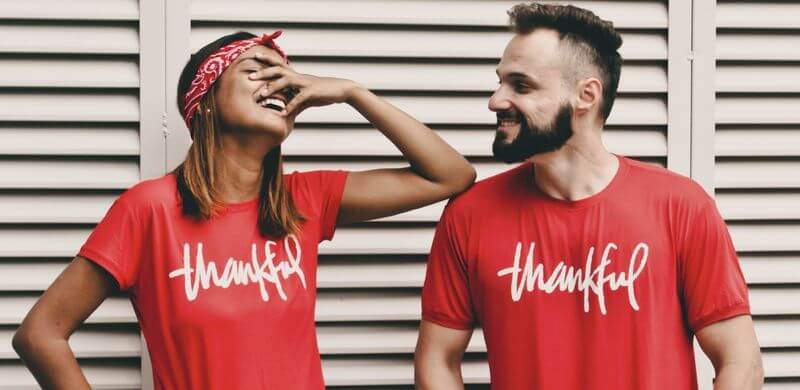The online T-shirt industry is booming. Long before 2020 brought a pandemic that kept more people at home, the T-shirt industry was already growing at a rapid pace. With such high demand for customized shirts, providing a platform for online sales has become a lucrative endeavor.
According to recent statistics, in 2022 the Men’s T-Shirt industry is projected to hit US $43.7 billion. The Women’s T-shirt segment is projected to reach US $68.7 billion in 2022. The market is expected to grow annually by 3.90% in both segments.
Is it Possible To Start a T-shirt business Without Any Inventory?

Yes it is possible to start a t-shirt business without any inventory, experience, or even a preferred shipping company.
There are three “no” factors to selling t-shirts online: no inventory, no experience, and no shipping hassles. Print-on-demand platforms like Printify, Printful, and others offer entrepreneurs the perfect opportunity to start a successful t-shirt business without having to keep a warehouse full of t-shirts.
Whether you want to start a t-shirt business or learn how to make shirts, this article will outline the primary stages involved in creating shirts, as well as some strategies to increase your earnings in a relatively short amount of time.
Preparing to Sell Shirts Without Inventory
Research is a vital component no matter what designs you decide to sell, or who you decide to sell to. Etsy is one of the easiest places to do your research, and is also the easiest place to make your very first online t-shirt sales.
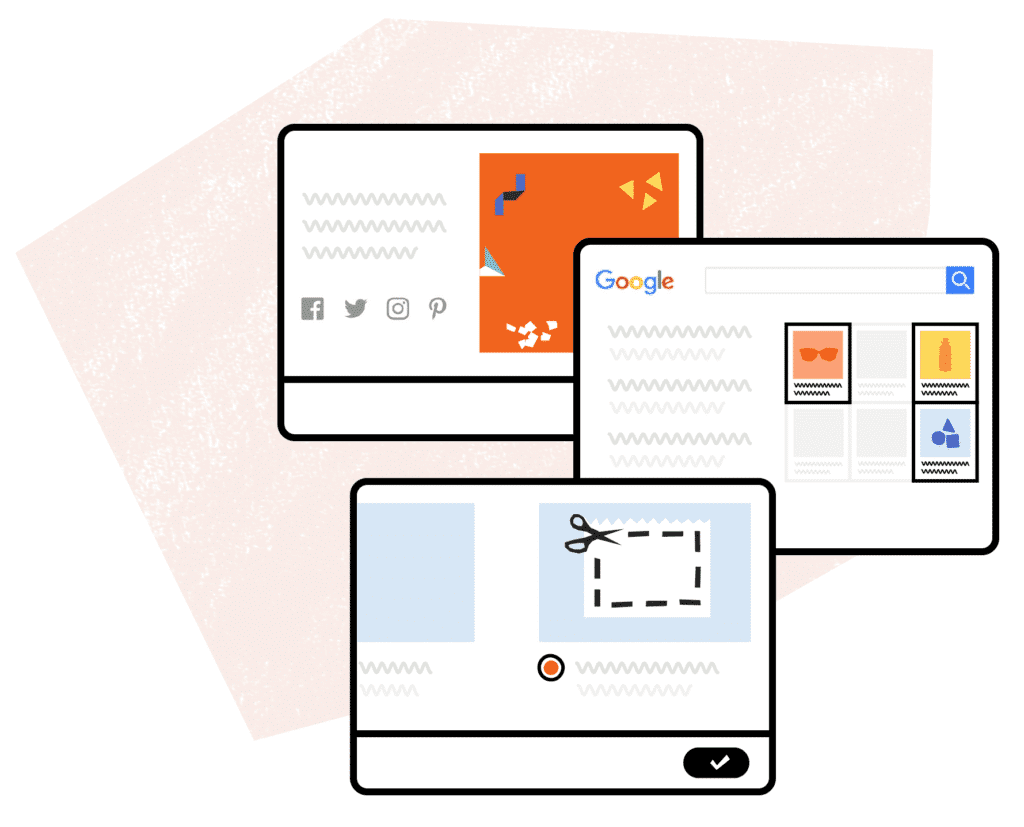
When you are ready to sell t-shirts on Etsy we have some great resources here at TshirtGrowth to help you. But in the mean time, go to Etsy and see what other sellers are actually selling. Review the store’s total sales, their reviews, and click the reviews to find out exactly which shirts are selling the most.
Check out other marketplaces for ideas, on sites like Merch by Amazon, Teepublic, and Teespring.
How to Sell T-shirts Online Without Inventory
The biggest weapon in your arsenal of selling T-shirts without inventory is Print-on-demand (POD) providers. While print-on-demand platforms allow you to sell a good number of items without inventory, we are going to focus on how to leverage POD to sell T-shirts without inventory.
In the old days, if you wanted to build an eCommerce business selling t-shirts, you would create an online shop where you would fulfill orders from your inventory that you ship to the customers. As time went on, in the early 2000s, dropshipping became a good option of selling shirts without inventory. But the challenge of selling other people’s merch (dropship model) has always been that the competition is fierce and margins are low.
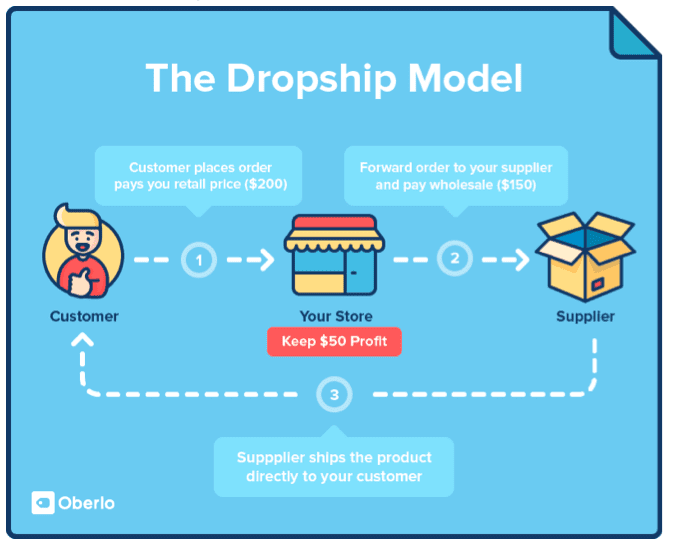
Today, there are countless Print-on-demand options to choose from. It is not only a great option to generate a small side income, but many people are building 6 and 7 figure brands with POD.
How Does Print On Demand Work for T-shirts?
For t-shirt businesses, print-on-demand is an apparel business concept that involves collaboration with a print provider who uses direct-to-garment printing equipment to fulfill, package, and ships printed t-shirt orders directly to the customer of the retail apparel brand.
Because of the equipment that POD platforms use, they can fulfill one-off product orders. Print on demand is similar to dropshipping in that items are produced only when a consumer places an order, removing the need for you to retain inventory on hand.
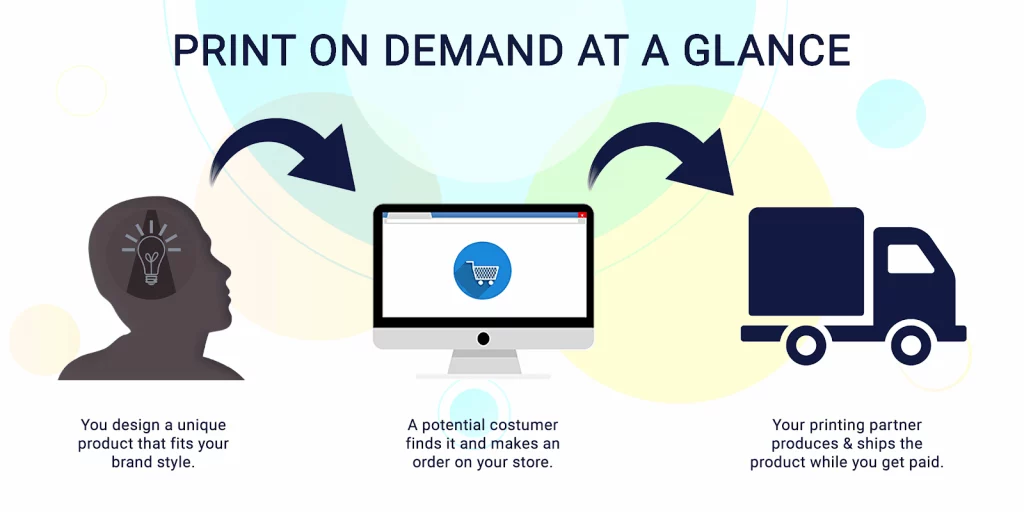
When you engage with a print-on-demand provider, they will cover everything following the sale, including printing, counting, packaging, and delivering the items. These businesses can also help you test a new product line or company idea without the risks of purchasing inventory.
The print-on-demand works like this, in simple terms: Your shop accepts orders for particular items using this form of fulfillment service. When a consumer places an order with your business, such as for a personalized t-shirt, the task is sent to a third-party supplier, who prints each product to order, packages it, and then ships it to the customer.
POD products have a simple setup process that takes only a few steps from start to finish. The first of these procedures, however, varies depending on the platform.
Selecting A Print-on-Demand T-shirt Print Provider
First, you must locate a POD service platform and create an account.
While there are several different print-on-demand platforms, I personally recommend Printify. I will go into more detail about this at the end of the article, but for me Printify wins due to low cost, high quality, and excellent customer service.
I’ve sold thousands of t-shirts through Printify and have had mostly 5-star reviews from my customers.
Once you create an account on Printify or other service, you can link the account to your Etsy store or your Shopify store. For most people starting out, I highly recommend creating an Etsy store and testing your brand there before investing in an eCommerce storefront.
You can create a simple design in Canva or Photoshop within a few minutes and upload it to Printify once it’s ready. I almost always create my designs in 12″ max width, and a resolution of 300 dpi, in .PNG format (with transparent background).
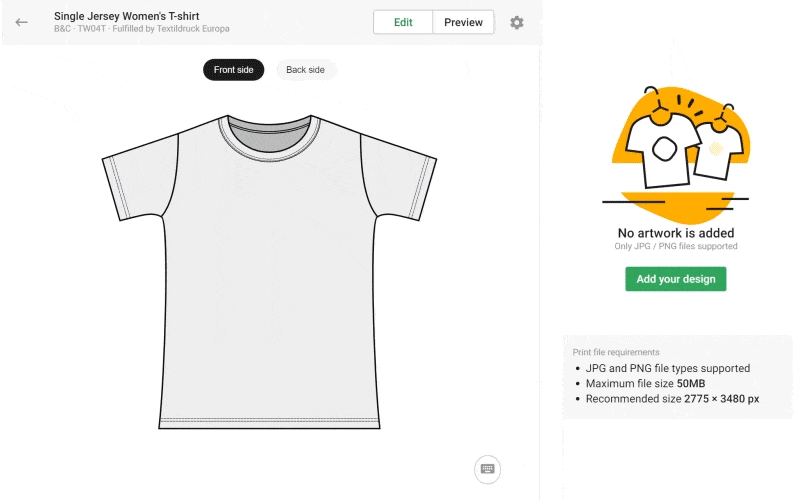
Once you add a title and description to your listing, you can “publish” the new listing to your Etsy store quickly. Again, we go into more detail about selling shirts on Etsy here.
Benefits Of Using Print On Demand to Sell T-shirts
As a dropshipping-based business strategy, print-on-demand provides several advantages for the aspiring eCommerce firm and includes the following:
- No Inventory Issues – This service allows a company to place orders through a third-party merchant; the primary seller does not have any inventory to manage. The printing provider manages the inventory, and finished products are only shipped once they have been prepared. While they stock blank t-shirts, a POD company does not stock printed inventory.
- No Fulfillment Efforts – Similar to inventory management, each order requires minimum input from the front-end organization. The service provider handles the printing and shipment of the order when it is received.
- Simple Accounts – POD platforms are, for the most part, simple. The seller, as a user, must create an account to place orders. It is frequently as straightforward as creating an account on any other eCommerce site. Additional information about product delivery is supplied when each order is received.
- Create A Distinct Identity – Standing out might be difficult with an internet business. Starting a POD business means you’ll have complete control over the appearance of your products and the branding of your small business. That means you can be yourself. Customers like one-of-a-kind items, so offer them precisely what they desire.
- Customize your designs – In addition to making your designs unique to your tastes, you can allow your consumers to customize their purchases through your POD business. Consider allowing buyers to personalize their products with a name or message. Find a provider who sells things in various colors so that clients may personalize their purchases even further.
- It’s Simple To Test New Designs, And Goods – More “conventional” business models make it difficult and risky to attempt selling new designs or items, but not print-on-demand companies. As a POD business owner, all you have to do is develop (or locate) the new design you’d want to try out and place an order with your supplier to see how it appears in person. You can also run a promotion on new designs; put it up on your website for a brief period at a lower price to see what type of response you get.
How to Choose a T-shirt Market with the Most Potential
Your interests (as well your skills as a designer) should undoubtedly play a role in selecting which target market has the best chance of success.
You’ll need to choose a niche with enough demand to produce sales but not oversaturated with other businesses. Remember that you want to stand out from the crowd, which will be more difficult if too many stores sell comparable items.

If reading the Bible is your favorite thing to do, then maybe a Christian T-shirt brand is a great way to focus that passion.
If dogs and dog breeds are all you talk about, then it makes sense to turn that passion into a new t-shirt brand about dog breeds. What you will find is that “Dog t-shirts” is a highly competitive niche. But if you can come up with a way to do something a little different, you can succeed.
Use T-shirt Mockups to List Your Products Without Inventory
In a sea of products on the internet, content, in addition to pricing and image, is critical to distinguishing your offering and capturing users’ attention. If you don’t carry inventory, how can you show your shirts (which you don’t have on hand) on models so you can create professional product listings?
POD platforms like Printify will give you access to flat mockups with your designs. These are provided with the Printify service. But what about those awesome pictures of people wearing your designs?
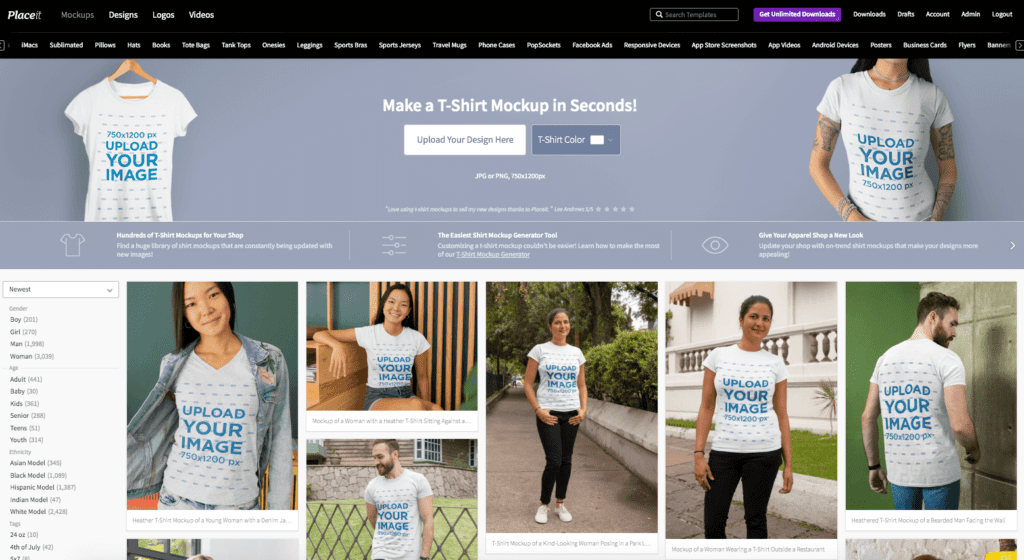
That can be done using a simple mockup platform like Placelt.
For less than $15/mo., you can create amazing mockups with Placeit, download those mockups, and upload them to your Etsy or eCommerce store as product photos.
More About Printify and Why They Are My Choice?
Printify is a popular choice among print-on-demand businesses because of its extensive range of high-quality items and brands (Bella, Next Level, Gildan, etc.), easy-to-use mockup generators, and more.
They provide each client with a range of tools and valuable information that can only elevate your t-shirt business to the next level. A dedicated help center can assist with any issues as quickly as possible.
The entire process of starting your business using Printify takes five easy steps:
- Select your merchandise from over 300 products
- Customize the gear
- Order samples
- Publish the designs
- Sit back and relax
Printify is be integrated with the following eCommerce sites:
- Shopify
- Etsy
- eBay
- PrestaShop
- BigCommerce
- WIX
- WooCommerce
- Printify API
One of the most valuable tools they offer to their clients is the easy-to-follow guides that handle various topics, such as “How To Pick A T-shirt”, “How To Sell On E-Bay”, and “Holiday Marketing Guides”.
Printify is also very affordable, in their own words: “We offer some of the lowest prices in the industry because print providers continuously compete to win your business.” They provide three subscription options:
- Free – gives you five stores per account and unlimited product designs. This package is recommended for start-ups.
- Premium – offers ten stores per account, unlimited designs, and up to 20% discount on all products. Printify suggests upgrading to premium once your orders increase monthly.
- Enterprise – has unlimited stores and product designs with up to 20% discount products. When your orders reach about 10k a month, it might be a good idea to opt for a better package.
My experience with Printify: Now for my own experience with Printify. On the premium plan $30/mo, I pay $8.05 for each front t-shirt design (any amount of colors) printed on a Bella Canvas 3001 tee. This price gives me $12 profit margin if you sell the shirt on Etsy for $20 + shipping. Even if you sell for less, or offer discounts, or free shipping, there is still plenty of profit to be had.
On Printful or most other platforms I have tested, the base product price is several dollars more. Simply put, you want to test your new t-shirt designs and brand on the least expensive production option there is (and still get high quality). Printify helped me keep my customers happy through COVID and through 2 Christmas seasons so far. I am a happy Printify customer. To check out Printify click here.
Conclusion
T-shirt sales without inventory are a terrific way to generate money online, and they’re a lot easier to get started with than you would think. You’ll be able to earn sales in no time if you know what to sell (appropriate designs), Where to sell (the most suitable platform), How to sell (proper keyword and platform research).
Overall, a print-on-demand business strategy can generate a nice profit. The true answer is that it is entirely up to you. Even with all of the fantastic benefits that are owning a T-shirt business has to offer, it will still demand commitment on your part. Best of luck to you and we hope you sell thousands and thousands of t-shirts without stocking any inventory.
Bryan E. Robinson is the former owner of TshirtGrowth. He has sold t-shirts since 2006 through dropshipping, screen printing, vinyl printing, DTG, Print on Demand, and more. Bryan has created his own t-shirt designs through Photoshop, Canva, and other platforms, as well as worked with freelancers to create many of his designs. Besides t-shirts, Bryan has over 18 years of experience in online marketing with eCommerce, B2B SaaS, B2C products, and more.

